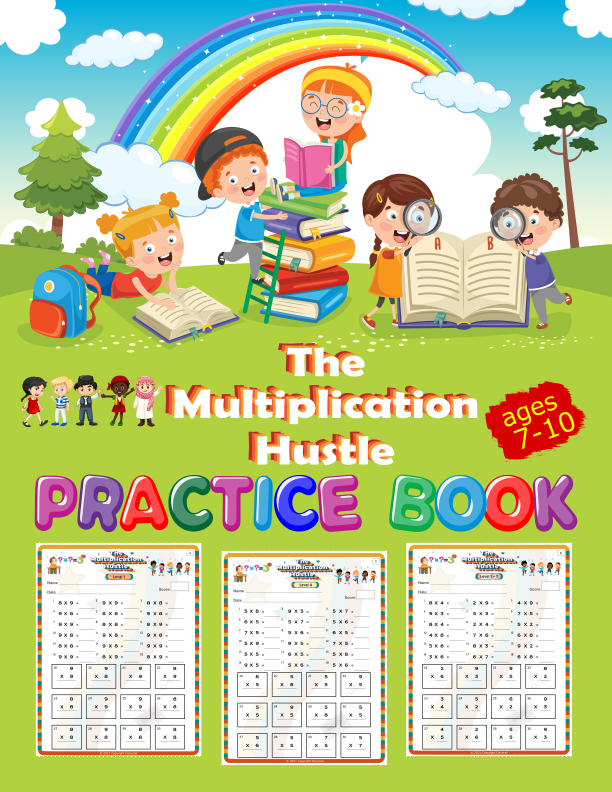Introduction
Like it or not, standardized test-taking is the name of the game when it comes to measuring school performance. With that in mind, this blog discusses 7 details to improve student test scores.
It’s no secret that standardized test scores have been on the decline in recent years. In 2013, only 42% of American students were proficient in math and reading on the National Assessment of Educational Progress. While there are a variety of factors that can contribute to this decline, it’s clear that something needs to be done in order to improve student test scores.
The good news is, there are a number of things that teachers and parents can do to help turn the tide. In this blog post, we will explore 7 strategies that have been shown to improve student test scores. From providing more individualized instruction to increasing parental involvement, these strategies are sure to make a difference.
Aim for mastery, not just performance
One of the best ways to improve student test scores is to focus on mastery, not just performance. When students are able to master a concept, they are more likely to be able to apply it in different contexts and remember it for a longer period of time.
There are a few different ways that teachers can promote mastery in their classrooms. First, they can provide opportunities for practice. This could involve assigning extra problems for students to work on at home or setting up practice tests in class.
Second, they can break down concepts into smaller pieces and focus on one piece at a time. This allows students to really understand each component before moving on to the next. Finally, teachers can give feedback that is specific and actionable. This type of feedback helps students identify what they need to work on in order to improve.
By promoting mastery in the classroom, teachers can help their students become better learners and improve their test scores.

Get students more engaged in their own learning
There are a number of strategies that teachers can use to get students more engaged in their own learning and improve student test scores. One way is to provide opportunities for students to work on problem-solving and critical-thinking tasks in small groups. This allows them to discuss the material with their peers and get immediate feedback on their understanding.
Another strategy is to use technology in the classroom, such as interactive whiteboards or tablet apps. These tools can help students visualize concepts and make connections between different ideas. Additionally, they can be used to provide real-time feedback on student progress.
Finally, it’s important to create a positive classroom environment where students feel comfortable taking risks and making mistakes. This means establishing clear rules and procedures, being consistent with rewards and consequences, and showing genuine interest in each student’s success. When students feel safe and supported, they’re more likely to take risks and engage fully in their learning.
Encourage a love of learning, not just grades
One of the best ways to improve student test scores is to encourage a love of learning, not just grades. When students are passionate about learning, they will be more likely to put in the extra effort needed to do well on tests. Here are some ways to promote a love of learning in your classroom:
- Make learning fun. If your students are enjoying themselves, they will be more engaged and motivated to learn. Use games, puzzles, and other interactive activities to keep them interested.
- Encourage curiosity. Help your students explore their interests and ask questions about the world around them. This will foster a love of learning that goes beyond simply memorizing facts for a test.
- Promote collaboration. Learning is more enjoyable when it’s done with others. Create opportunities for your students to work together on projects and assignments.
- Allow for choice. When students have some control over what they learn, they are more likely to be engaged and motivated. Offer different options for assignments and let them choose topics that interest them.
- Provide feedback that is meaningful and specific . Students need regular feedback in order to improve their performance .Make sure your feedback is specific and focuses on areas where the student can make real progress.

Help students see mistakes as learning opportunities
When it comes to taking tests, some students see mistakes as a personal failing. This can lead to a lot of stress and anxiety, which can in turn lead to poorer test performance.
It’s important to help students see mistakes as learning opportunities. Mistakes are part of the learning process and help us to understand what we need to work on. When students make mistakes, it’s an opportunity for them to learn from those mistakes and do better next time.
Here are some ways you can help your students see mistakes as learning opportunities:
- Encourage them to talk about their mistakes. What went wrong? What could they have done differently? What will they do next time?
- Help them to understand that everyone makes mistakes and that it’s okay. Everyone learns from their mistakes and gets better with practice.
- Encourage them to keep trying even when they make a mistake. Remind them that making progress is more important than being perfect.
- Help them to see mistakes as a chance to learn and grow, not as a reflection of their worth or ability.
- Provide positive feedback when students make mistakes and give them strategies for improving in the future.
By helping your students to see mistakes as learning opportunities, you can help them to build their confidence and gain a better understanding of the material.
Teach them how to study smarter, not harder
There are a number of strategies that can help students learn how to study smarter, not harder. One strategy is to provide students with specific guidelines on how to study for an upcoming test.
Another strategy is to allow students to use study aids such as flashcards or apps. Additionally, it is important to encourage students to take practice tests under timed conditions. Finally, it is helpful to have students reflect on their successes and failures in order to learn from their mistakes.
Encourage active and cooperative learning
Active learning is a form of learning in which students are actively engaged in the learning process, rather than passively listening to a lecture or reading from a textbook. Cooperative learning is an instructional strategy that involves students working together in small groups to complete a task or solve a problem.
Both active and cooperative learning have been shown to be effective in improving student test scores. Active learning encourages students to think critically and ask questions, while cooperative learning helps students learn to work together and communicate effectively.
Use data to inform instruction
When it comes to student test scores, data is key. By using data to inform instruction, educators can make changes and tweaks that can have a big impact on student performance.
This doesn’t mean that you should rely solely on data when making decisions about instruction. Data should be used as one of several sources of information, along with your own observations and knowledge of your students. But if you’re not using data to inform your instruction, you’re likely missing out on valuable insights that could help improve student learning.
There are a few different ways that data can be used to inform instruction. First, educators can take a look at overall trends in student performance. This can help them identify areas where students are struggling and make changes to the way instruction is delivered in those areas.
Another way to use data is to track individual student progress. This information can be used to target specific students who may need extra help or enrichment. By constantly monitoring student progress, educators can make sure that no one falls through the cracks.
Finally, data can be used to assess the effectiveness of instructional strategies and materials. By looking at how students respond to different teaching methods and materials, educators can fine-tune their approach to better meet the needs of their students.
Conclusion
With these seven strategies, you should now have a good idea of how to help students improve their test scores. It is important to remember that every student learns differently and will require different approaches. However, these strategies can be used as a starting point for helping your students reach their full potential on tests. With the right guidance and support, your students can develop the confidence they need to achieve success in all of their academic pursuits.


